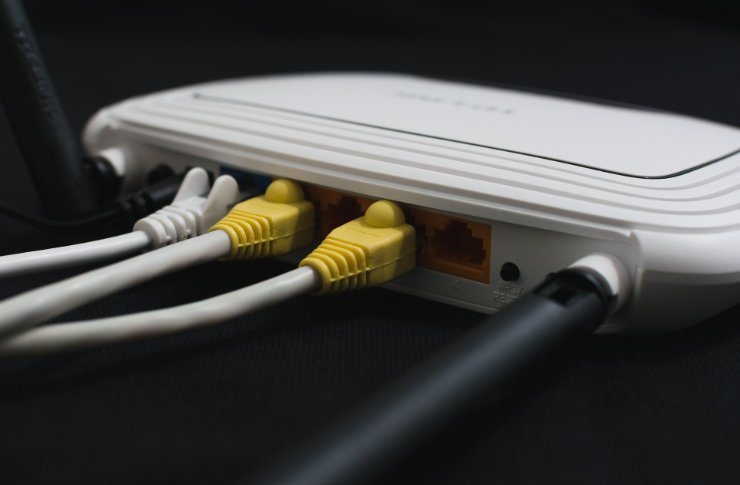Spectrum Sharing: Revolutionizing Wireless Efficiency
The airwaves are bustling with wireless signals, carrying our calls, texts, and data. But as demand for connectivity skyrockets, how can we maximize this finite resource? Enter spectrum sharing, a groundbreaking approach that's reshaping how we utilize the radio frequency spectrum. This innovative technology promises to unlock new possibilities for wireless communication, improve network capacity, and pave the way for more efficient connectivity solutions.

Traditionally, spectrum allocation has been a static process, with specific frequency bands assigned to particular services or operators. This approach, while straightforward, often results in inefficient use of the available spectrum. Some bands may be underutilized, while others are congested, leading to poor service quality and limited innovation.
The Rise of Dynamic Spectrum Sharing
Dynamic Spectrum Sharing (DSS) emerges as a game-changing solution to the spectrum crunch. This technology allows multiple users or services to access the same frequency band simultaneously, optimizing spectrum usage and improving overall efficiency. DSS works by intelligently allocating spectrum resources in real-time based on demand and availability.
At its core, DSS relies on advanced algorithms and machine learning techniques to analyze spectrum usage patterns and make instantaneous decisions about frequency allocation. This dynamic approach ensures that spectrum resources are used to their fullest potential, minimizing waste and maximizing capacity.
Cognitive Radio: The Brain Behind Spectrum Sharing
Central to the concept of spectrum sharing is cognitive radio technology. Cognitive radios are intelligent devices capable of sensing their radio environment, learning from past experiences, and adapting their transmission parameters accordingly. These smart radios can identify unused portions of the spectrum, known as “white spaces,” and dynamically access them without causing interference to primary users.
Cognitive radios use various techniques to achieve this feat, including spectrum sensing, geolocation databases, and predictive modeling. By continuously monitoring the radio environment and making real-time decisions, cognitive radios can significantly improve spectrum utilization and enable more efficient wireless communication.
TV White Spaces: Unlocking Unused Spectrum
One of the most promising applications of spectrum sharing technology is the utilization of TV White Spaces (TVWS). These are unused portions of the television broadcast spectrum that can be repurposed for other wireless communication services. TVWS technology has gained significant attention due to its potential to provide broadband connectivity in underserved areas, particularly rural and remote regions.
TVWS operates in the VHF and UHF bands, which have excellent propagation characteristics, allowing signals to travel long distances and penetrate obstacles. This makes TVWS an ideal solution for providing last-mile connectivity in challenging environments. Several countries, including the United States, United Kingdom, and Canada, have already implemented regulations to enable TVWS technology, paving the way for innovative connectivity solutions.
Challenges and Regulatory Considerations
While spectrum sharing technologies offer immense potential, their widespread adoption faces several challenges. One of the primary concerns is ensuring that spectrum sharing does not cause harmful interference to incumbent users. Regulatory bodies worldwide are grappling with the task of developing frameworks that balance innovation with the protection of existing services.
Another challenge lies in the standardization of spectrum sharing technologies. For these solutions to be effective on a global scale, there needs to be interoperability between different systems and devices. Industry stakeholders are working together to develop common standards and protocols to address this issue.
The Future of Wireless Connectivity
As we look to the future, spectrum sharing technologies are poised to play a crucial role in shaping the wireless landscape. The advent of advanced machine learning algorithms and artificial intelligence will further enhance the capabilities of cognitive radios, enabling even more efficient spectrum utilization.
Moreover, the integration of spectrum sharing with other emerging technologies, such as software-defined networking and network function virtualization, will create new possibilities for flexible and adaptive wireless networks. This convergence of technologies will be instrumental in meeting the ever-increasing demand for connectivity and supporting the next generation of wireless applications.
In conclusion, spectrum sharing represents a paradigm shift in how we approach wireless communication. By unlocking the full potential of our radio frequency spectrum, this technology promises to alleviate the spectrum crunch, improve network capacity, and enable innovative connectivity solutions. As research and development in this field continue to advance, we can look forward to a future where wireless resources are used more efficiently, paving the way for a truly connected world.





